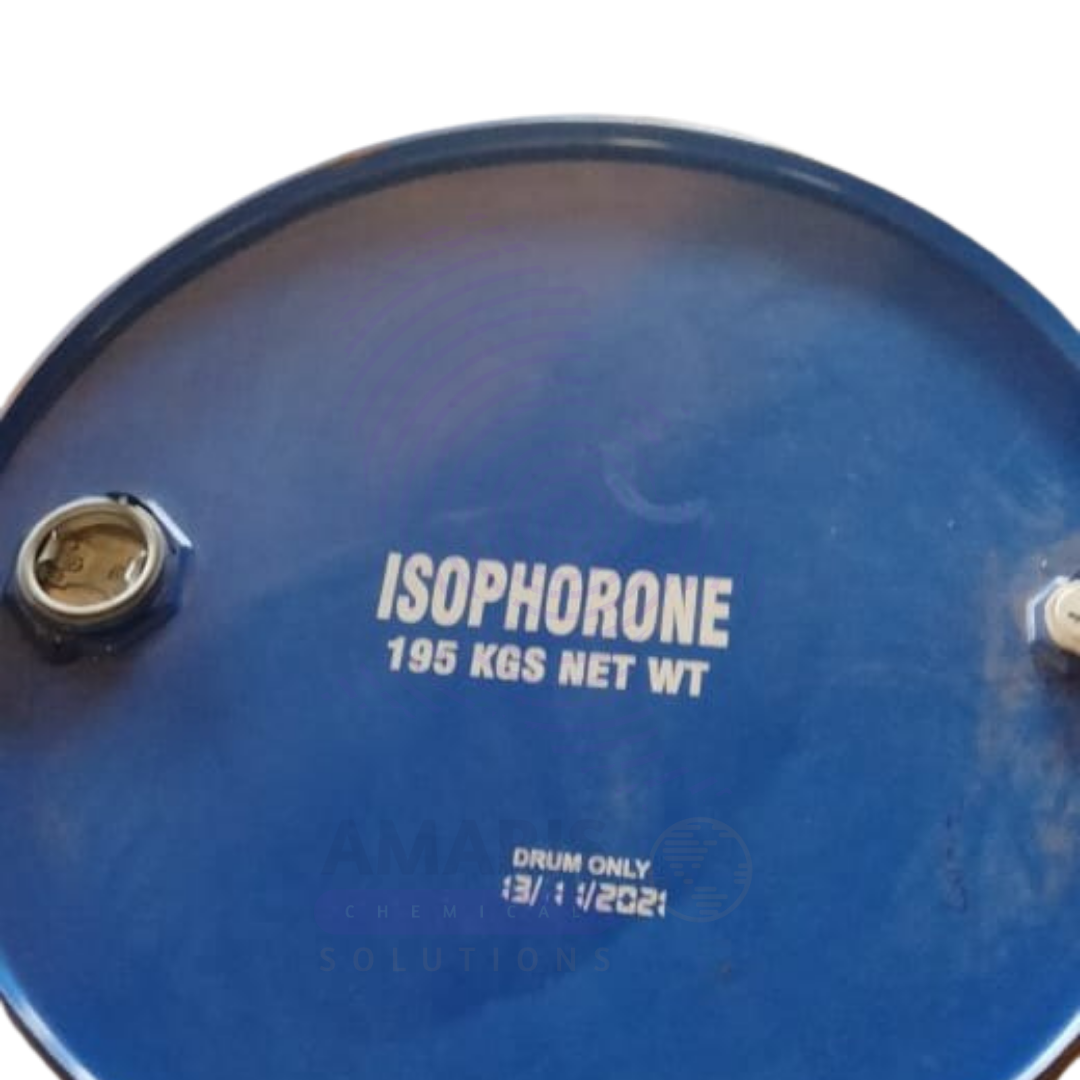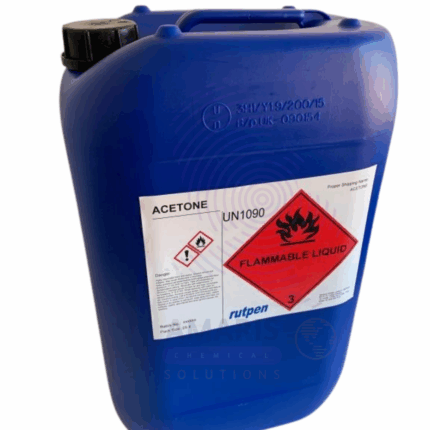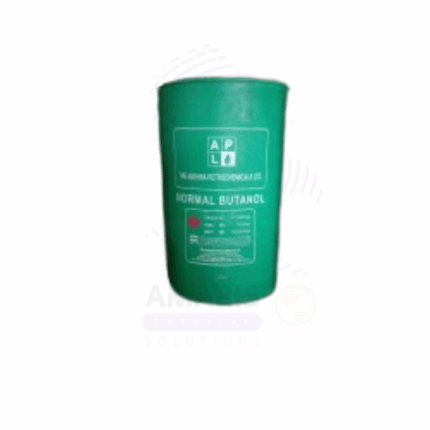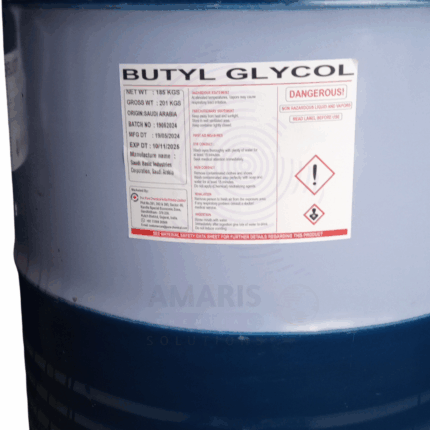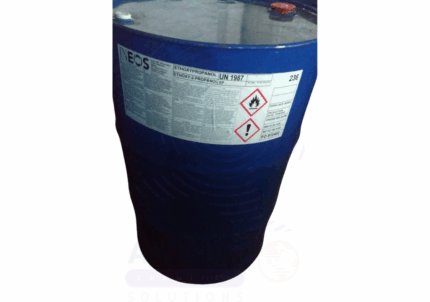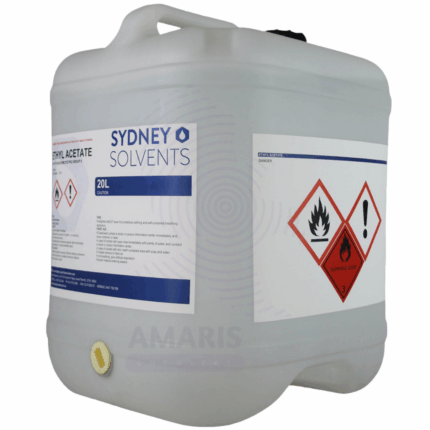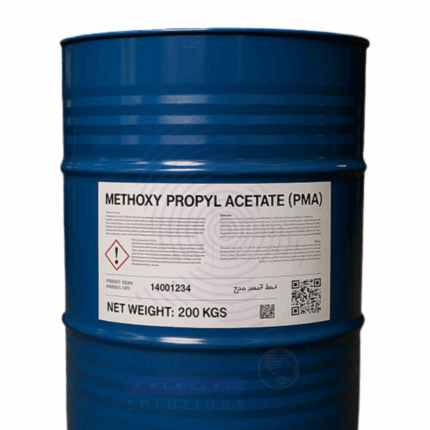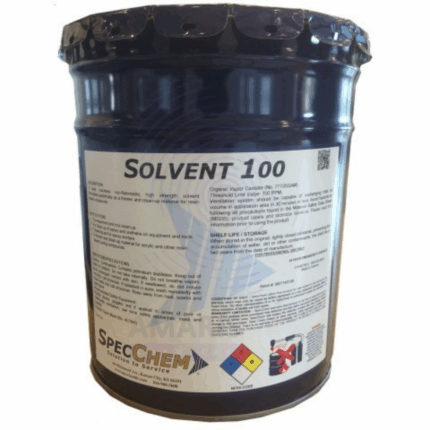Back to products
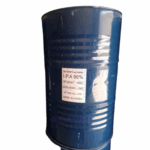

Isopropyl Alcohol Tech Grade
$ 3.90 Original price was: $ 3.90.$ 3.79Current price is: $ 3.79.
Isophorone
Whatsapp Order
Isophorone is a colorless to pale yellow liquid with a pungent, ketone-like odor. Chemically classified as a cyclic α,β-unsaturated ketone (3,5,5-trimethyl-2-cyclohexen-1-one), it is a solvent widely used in industrial applications. It has good solvency properties for resins, paints, coatings, and inks, combined with relatively slow evaporation compared to other ketones. Isophorone is miscible with many organic solvents and used extensively in manufacturing and chemical synthesis.
Description
Table of Contents
Toggle
Isophorone
Primary Uses
- Solvent in Coatings and Paints
- Used as a solvent for paints, varnishes, lacquers, and coatings to dissolve resins and improve application properties.
- Provides slow evaporation rate, improving flow and leveling of coatings.
- Adhesives and Inks
- Employed as a solvent in adhesives and printing inks for enhanced drying and film formation.
- Chemical Intermediate
- Used as an intermediate in the synthesis of herbicides, pesticides, pharmaceuticals, and other organic chemicals.
- Cleaning and Degreasing
- Utilized in industrial cleaning formulations to remove oils, greases, and other residues from metal and machinery parts.
Secondary Uses
- Polymer Industry
- Applied as a solvent or processing aid in polymer synthesis and modification, including polymer coatings and films.
- Laboratory Reagent
- Used as a reagent and solvent in chemical research and analytical laboratories.
- Leather Industry
- Employed in leather processing as a solvent for dyes and finishing agents.
- Textile Industry
- Occasionally used as a solvent for textile dyes and in fabric finishing processes.
KEY PRODUCT FEATURES
1. Basic Identification Attributes
- Chemical Name (IUPAC): 3,5,5-Trimethyl-2-cyclohexen-1-one
- Common/Trade Name: Isophorone
- CAS Number: 78-59-1
- HS Code: 2914.11.00
- Synonyms: 3,5,5-Trimethyl-2-cyclohexen-1-one; β-Isophorone
2. Physical & Chemical Properties
- Physical State: Liquid
- Color & Odor: Colorless to pale yellow; pungent ketone-like odor
- Boiling Point: 215–217 °C
- Melting Point: −8 °C
- Density: 0.94 g/cm³ (approx.)
- Solubility: Slightly soluble in water; miscible with most organic solvents
- Vapor Pressure: Moderate at room temperature
- Flash Point: Approximately 81 °C
3. Safety & Hazard Attributes
GHS Classification:
- Flammable liquid (Category 3)
- Causes skin irritation and serious eye irritation
- May cause respiratory irritation
- Possible reproductive toxicity
Toxicity:
- Harmful if inhaled or absorbed through skin; prolonged exposure may cause adverse health effects
Exposure Limits:
- Occupational exposure limits vary; use appropriate ventilation and PPE
4. Storage & Handling Attributes
Storage Conditions:
- Store in cool, well-ventilated area away from heat, sparks, and open flames
Container Type:
- Stored in tightly closed metal or plastic containers resistant to solvents
Shelf Life:
- Stable under recommended storage conditions for up to 2 years
Handling Precautions:
- Avoid inhalation, skin, and eye contact
- Use personal protective equipment (gloves, goggles, respirator as needed)
5. Regulatory & Compliance Attributes
- Complies with chemical safety regulations worldwide (OSHA, REACH, EPA)
- Subject to flammable liquid storage and transportation regulations
6. Environmental & Health Impact
- Biodegradability: Moderately biodegradable
- Ecotoxicity: Harmful to aquatic life; avoid release to environment
- Bioaccumulation: Low potential
- Carcinogenicity/Mutagenicity: Not classified as carcinogen
SAFETY HANDLING PRECAUTIONS
Safety Handling Precautions
PPE Required:
- Chemical-resistant gloves, safety goggles, protective clothing, and respiratory protection if ventilation is inadequate
Handling Guidelines:
- Handle in well-ventilated areas or fume hoods
- Avoid sources of ignition and static discharge
Storage Measures:
- Store away from incompatible substances such as strong oxidizers and acids
First Aid Measures
- Inhalation: Move to fresh air; seek medical attention if breathing difficulties occur
- Skin Contact: Wash with soap and water; seek medical advice if irritation persists
- Eye Contact: Rinse immediately with water for at least 15 minutes; obtain medical attention
- Ingestion: Do not induce vomiting; rinse mouth and seek medical attention promptly
Firefighting Measures
- Fire Hazards: Flammable; emits toxic fumes when heated or burning
- Extinguishing Media: Use foam, dry chemical, or carbon dioxide extinguishers
- Special Precautions: Use full protective gear and self-contained breathing apparatus
- Hazardous Combustion Products: Carbon monoxide, carbon dioxide, and other toxic fumes
Related products
Acetone
Acetone Extra Pure is a high-purity grade of acetone (≥99.5%) specifically purified to meet stringent quality standards for laboratory and industrial applications. This volatile, colorless solvent is characterized by its rapid evaporation rate, excellent solvency power, and minimal impurity content, making it suitable for sensitive chemical processes and analytical applications
Butanol
Butanol (also known as n-Butanol or Normal Butanol) is a clear, colorless liquid with a mild, alcoholic odor. It is a four-carbon primary alcohol with the chemical formula C4H10O. Butanol is moderately soluble in water and miscible with many organic solvents. Its physical and chemical properties make it a versatile solvent and chemical intermediate. Butanol indicates a high purity grade often used in industrial, pharmaceutical, and chemical synthesis applications.
Butyl Glycol
Butyl Glycol, also known as 2-Butoxyethanol, is a colorless to pale yellow liquid with a mild, sweet ether-like odor. It is an organic solvent classified as a glycol ether, with the molecular formula C6H14O2. Butyl Glycol is highly miscible with water, alcohols, and many organic solvents. It is widely used in industrial and commercial applications due to its excellent solvent properties, low volatility, and moderate toxicity. Its high solvency and compatibility with both aqueous and organic phases make it valuable in coatings, cleaning products, inks, and adhesives.
Ethoxy Propanol
Ethoxy Propanol, also known as Propylene Glycol Monoethyl Ether (PnP), is a clear, colorless, low-viscosity solvent with a mild ether-like odor. It belongs to the family of glycol ethers and is miscible with water and most organic solvents. Ethoxy Propanol is widely valued for its excellent solvency, moderate evaporation rate, and compatibility with both polar and non-polar systems. It is extensively used in coatings, inks, cleaners, and chemical synthesis applications due to its balance of performance and safety.
Ethyl Acetate
Ethyl Acetate is a clear, colorless, volatile organic solvent with a characteristic sweet, fruity odor reminiscent of pear drops. It is an ester formed by the condensation of ethanol and acetic acid. Known for its excellent solvency, low toxicity, and rapid evaporation rate, Ethyl Acetate is widely used as a solvent in coatings, adhesives, inks, pharmaceuticals, and chemical synthesis. It is miscible with most organic solvents and partially soluble in water. Ethyl Acetate offers high volatility, making it ideal for quick-drying formulations.
Methoxy Propyl Acetate
Methoxy Propyl Acetate is a clear, colorless liquid solvent with a mild fruity odor. It is an ester derived from methoxy propanol and acetic acid, widely used in coatings, inks, adhesives, and cleaning products due to its excellent solvency, moderate evaporation rate, and good compatibility with various resins. PMA offers low volatility and strong solvency for a broad range of materials, making it ideal for industrial and commercial applications.
Naphta Solvent
Naphta Solvent Kokosal, commonly known as Kokosal, is a petroleum-derived hydrocarbon solvent composed primarily of aliphatic and aromatic hydrocarbons with a boiling range near 100°C. It is a clear, colorless to pale yellow liquid with a characteristic hydrocarbon odor. Kokosal is widely used as an industrial solvent due to its excellent solvency power, moderate evaporation rate, and compatibility with many resins, oils, and waxes. It is valued in applications such as coatings, adhesives, cleaning, and chemical synthesis.
Shellsol T
Shellsol T is a low aromatic, high-purity petroleum hydrocarbon solvent known for its excellent solvency power and relatively low odor. It is a clear, colorless liquid commonly used in coatings, adhesives, inks, and chemical processing where strong solvency with moderate evaporation rates is needed. Its balanced properties make it suitable for industrial applications requiring controlled drying and good compatibility with various resins and polymers.


 Preservatives(food)
Preservatives(food) Flavor Enhancers
Flavor Enhancers Acidulants
Acidulants Sweeteners
Sweeteners Antioxidants
Antioxidants Colorants(food)
Colorants(food) Nutraceutical Ingredients (food)
Nutraceutical Ingredients (food) Nutrient Supplements
Nutrient Supplements Emulsifiers
Emulsifiers
 Collectors
Collectors Dust Suppressants
Dust Suppressants Explosives and Blasting Agents
Explosives and Blasting Agents Flocculants and Coagulants
Flocculants and Coagulants Frothers
Frothers Leaching Agents
Leaching Agents pH Modifiers
pH Modifiers Precious Metal Extraction Agents
Precious Metal Extraction Agents
 Antioxidants(plastic)
Antioxidants(plastic) Colorants (Pigments, Dyes)
Colorants (Pigments, Dyes) Fillers and Reinforcements
Fillers and Reinforcements Flame Retardants
Flame Retardants Monomers
Monomers Plasticizers
Plasticizers Polymerization Initiators
Polymerization Initiators Stabilizers (UV, Heat)
Stabilizers (UV, Heat)
 Antifoaming Agents
Antifoaming Agents Chelating Agents
Chelating Agents Coagulants and Flocculants
Coagulants and Flocculants Corrosion Inhibitors
Corrosion Inhibitors Disinfectants and Biocides
Disinfectants and Biocides Oxidizing Agents
Oxidizing Agents pH Adjusters
pH Adjusters Scale Inhibitors( water)
Scale Inhibitors( water)
 Antioxidants(cosmetic)
Antioxidants(cosmetic) Emollients
Emollients Fragrances and Essential Oils
Fragrances and Essential Oils Humectants
Humectants Preservatives
Preservatives Surfactants(cosmetic)
Surfactants(cosmetic) Thickeners
Thickeners UV Filters
UV Filters
 Fertilizers
Fertilizers Soil Conditioners
Soil Conditioners Plant Growth Regulators
Plant Growth Regulators Animal Feed Additives
Animal Feed Additives Biostimulants
Biostimulants Pesticides (Herbicides, Insecticides, Fungicides)
Pesticides (Herbicides, Insecticides, Fungicides)
 Active Pharmaceutical Ingredients (APIs)
Active Pharmaceutical Ingredients (APIs) Excipients
Excipients Solvents(pharmaceutical)
Solvents(pharmaceutical) Antibiotics
Antibiotics Antiseptics and Disinfectants
Antiseptics and Disinfectants Vaccine Adjuvants
Vaccine Adjuvants Nutraceutical Ingredients (pharmaceutical)
Nutraceutical Ingredients (pharmaceutical) Analgesics & Antipyretics
Analgesics & Antipyretics
 Analytical Reagents
Analytical Reagents Solvents(lab)
Solvents(lab) Chromatography Chemicals
Chromatography Chemicals Spectroscopy Reagents
Spectroscopy Reagents microbiology-and-cell-culture-reagents
microbiology-and-cell-culture-reagents Molecular Biology Reagents
Molecular Biology Reagents Biochemical Reagents
Biochemical Reagents Inorganic and Organic Standards
Inorganic and Organic Standards Laboratory Safety Chemicals
Laboratory Safety Chemicals Specialty Laboratory Chemicals(Special Laboratory Equipment)
Specialty Laboratory Chemicals(Special Laboratory Equipment)
 Demulsifiers
Demulsifiers Hydraulic Fracturing Fluids
Hydraulic Fracturing Fluids Scale Inhibitors(oil)
Scale Inhibitors(oil) Surfactants(oil)
Surfactants(oil) Drilling Fluids
Drilling Fluids
 Dyes and Pigments
Dyes and Pigments Bleaching Agents
Bleaching Agents Softening Agents
Softening Agents Finishing Agents
Finishing Agents Antistatic Agents
Antistatic Agents
 Admixtures
Admixtures Waterproofing Agents
Waterproofing Agents Sealants and Adhesives
Sealants and Adhesives Curing Compounds
Curing Compounds Concrete Repair Chemicals
Concrete Repair Chemicals Anti-Corrosion Coatings
Anti-Corrosion Coatings
 Surfactants(cleaning)
Surfactants(cleaning) Builders
Builders Enzymes
Enzymes Solvents (Cleaning)
Solvents (Cleaning) Fragrances
Fragrances
 Electronic Chemicals
Electronic Chemicals Catalysts
Catalysts Lubricants
Lubricants Photographic Chemicals
Photographic Chemicals Refrigerants
Refrigerants Automotive chemicals
Automotive chemicals Pyrotechnic Chemicals
Pyrotechnic Chemicals
 Biodegradable Surfactants
Biodegradable Surfactants Bio-based Solvents
Bio-based Solvents Renewable Polymers
Renewable Polymers Carbon Capture Chemicals
Carbon Capture Chemicals Wastewater Treatment Chemicals
Wastewater Treatment Chemicals
 Pigments
Pigments Solvents(paint)
Solvents(paint) Specialty Coatings
Specialty Coatings Binders/Resins
Binders/Resins Additives
Additives Driers
Driers Anti-Corrosion Agents
Anti-Corrosion Agents Functional Coatings
Functional Coatings Application-Specific Coatings
Application-Specific Coatings
 Fresh Herbs
Fresh Herbs Ground Spices
Ground Spices Whole Spices
Whole Spices Spice Blends
Spice Blends Dried Herbs
Dried Herbs
 Leavening Agents
Leavening Agents Dough Conditioners
Dough Conditioners Flour Treatments
Flour Treatments Fat Replacers
Fat Replacers Decoratives
Decoratives Preservatives(baking)
Preservatives(baking)
 Plasticizers & Softeners
Plasticizers & Softeners Reinforcing Agents
Reinforcing Agents Adhesion Promoters
Adhesion Promoters Vulcanizing Agents
Vulcanizing Agents Antidegradants
Antidegradants Blowing Agents
Blowing Agents Fillers & Extenders
Fillers & Extenders Accelerators & Retarders
Accelerators & Retarders